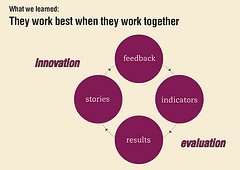The terminology found its way into the dictionary of executives, thanks to the 1995 article “Disruptive Technologies: Catching the Wave” by Clayton M. Christensen & Joseph Bower. The disruptive innovations will be a game changer not just in the development of product or technology but also in day to day business operations. It has become almost mandatory for executives to break away from the norm in order to improve their business.
Organizations like Nokia, Xerox, Hindustan motors are few in the long list of organizations in varied sectors which missed the flight by not innovating disruptively. Most of these erstwhile market leaders, are either playing catch-up, or are no longer in the business. This critically proves the importance of getting acclimatized quickly and inventing disruptively.
In today’s changing business environment, disruptive innovation is more about adapting to the best principles rather than following the best practices. This requires a disruptive approach to the style of functioning of the management itself. Kaplan S introduced the concept of “LEAPS” for the process of disruptive innovation. He pointed out the importance for an organization to travel and unravel the surprise not only to lead but to survive in the industry.
|
LEAPS
|
STRATEGY
|
|
|
L
|
Listen
|
Start from oneself, not from market
|
|
E
|
Explore
|
Go outside to stretch the inside
|
|
A
|
Act
|
Take small steps again and again and again
|
|
P
|
Persist
|
Take the surprise out of failure
|
|
S
|
Seize
|
Make the journey a part of the (surprising) destination
|
Source : Ivey Business Journal
As a matter of survival, it is not sufficient if the management acts only on macro innovations. Innovations in day-to-day activities are also equally necessary. Though macro – innovations will drive the industry towards new territories, the micro – innovations in the daily operations will be far more important for the organizations. The disruptive innovations not only change the way we live but also have the potential to create new organizations and sectors. The ability to disruptively innovate in the daily operations of the industry will give an edge for the players from their competitors.
Innovation standards set by 3M stand precedent to the new generation technological companies like Google and HP. They allowed 15% of the paid time in allowing the employees to chase dreams and hatch new innovations. Post-it, the iconic product is an output of one such practice. Disruptive innovation is not only limited to technology driven sectors as fairly misconceived by many. As most of the innovations happen in the field of Mobile, laptops and other electronics, people carry this notion. For an organization the innovation must happen across all its operations processes and functions. Regardless of the firm being in manufacturing or services the need for disruptive innovation is the order of the day. The same has to be understood by the current day managers so as to act swiftly to the changing horizon.
1. Supply Chain Management
Supply Chain Management has been changed with the inclusion of RFIDs leading to better visibility for the supply chain. The concept of green supply chain has provided better returns for Toyota in achieving its triple bottom line. Retailers like Best Buy have got a return of $100million through its reverse logistics practice.
2.Banking
The banking sector has been revolutionized with the changes in e-commerce and mobile banking storming the arena. Citibank’s Smart banking branches serve its customers in a new way by combining creative and smart technologies. The branches offer free wireless connections and live streaming screens for showing news on market information. Service representatives can be reached through video chatting and products can be browsed through by the customers using touch screens. This has not only helped them in garnering more customers but also enabled them in winning international awards.
3.Marketing
Getting out the word in a miserly way, to reach the customers about the products is the need of the hour. Innovations in marketing communication will hence play a major role in it. With the advent of social media and numerous other opportunities through mobile and internet, marketing communication has been changing enormously enabling companies to communicate with its customers in a more customized way.
But all new innovations do not succeed. The hard fact is that close to 70 % of new products introduced fail to find customers due to the endowment effect. Thus for any innovation to be accepted it must not only make customer perceive it overwhelmingly over their status quo but deliver on what it promises.
The aforementioned points are some of the benefits the organizations reaped out of the innovative ideas in the last decade. In the coming years it is mandatory for the executives to act not only as Brahma and Vishnu but also as Shiva – to disruptively innovate. They need to learn to create, work on it and once again creatively destroy it.
Although we can see the benefits of disruptive innovation only retrospectively, it is still intriguing for executives to check the possibility of converting disruptive idea generation into a formal, repeatable process.
References:
1.Christensen, C. (2003), The Innovator’s Dilemma: When New Technologies Cause Great Firms to Fall, Harper Paperbacks, New York.
2.Kaplan,S.(2012),Leapfrogging: Harness the Power of Surprise for Business Breakthroughs, Berrett-Koehler, San Francisco.
[The article has been written by Manoj Hariharan. He is presently a PGDM student at IIM Raipur and has interests in Operations Research and Supply Chain Management]


































